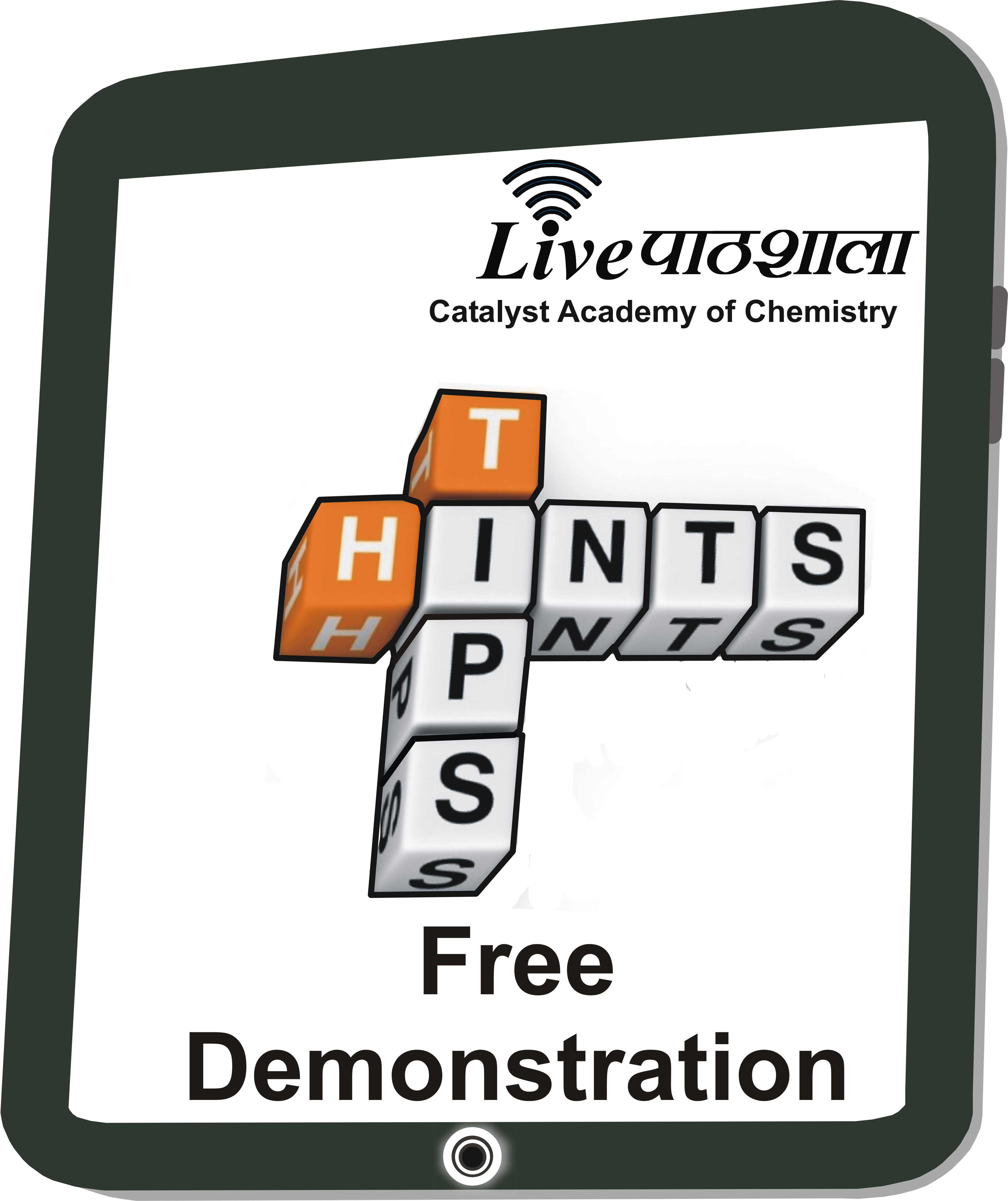About LIVE Paathshala:
LIVE Paathshala is venture of Catalyst Academy of Chemistry broadcasting Real-Time LIVE Interactive Streaming (Unique blend of Conventional & Modern methods of Teaching and Learning) of Chemistry useful for students of Grade XI to crack SAT II Exam., Advanced Placement Chemistry Exam.
The Chemistry delivered by us covers all Fundamentals of chemistry including Concepts and its Applications such as (How & when), and its techniques to understand at all levels. The points covered is the integrated syllabus of all Boards (C.B.S.E., ICSE, STATE . . . . . .) & Universities. It also guide students about exam techniques, How to do well to achieve their Goal.
This comprehensive course includes Tips, Tricks, Techniques, Practice problems and Applications to keep students away from Chemistry Phobia. It also guide students for selection of Carrier & also make them do well in all aspects.
DESCRIPTION :
This program is for the students of Standard XI (Science) who are interested to learn Chemistry thoroughly to take admission if Elite Universities. It is intended to be a condensed review of various concepts from a typical Chemistry course. This course is a blend of LIVE-based instruction and Real-time LIVE Interactive Session to achieve their Goal & fulfill their Dreams very smoothly.
About FREE Demonstration
The "Free Demonstration" will focus on Role of Chemistry in all exams to achieve Goal.It will include the skills like willingness to take up new things, stickiness, learnability, and enthusiasm. We will also help Students to understand the skilling gap that can help them to grow. The students will have an understanding of the hottest trends in education sector with the increase in demand of knowledge.
During this FREE Demonstration, our expert(s) will discuss:
- Expectation of students from recent pass outs - learnability, stickiness, willing to learn up new things, enthusiasm.
- Gaps that education perceives - gap between theory & practical.
- How to bridge the gaps - serious learning, meaningful concepts.
- How to understand what is hot in chemistry.
- Applications of Chemistry on natural changes & synthetic usability.
- Character traits that helps in this journey - long term vs short term, keeping focused on objective.
General discussion of Concepts of Chemistry, its applications in all aspects, and .........
Number of Students per Batch : Only 20
Duration : 01 Day (01 Hr. per day)
Batch Time :
| COUNTRY | TIME ZONE | BATCH TIME | STARTS ON | ENDS ON |
| INDIA | GMT +5.30 | |||
| GULF | GMT +3.00 | 06:30 p.m. to 07:30 p.m. | ||
| U.A.E. | GMT +4.00 | 06:45 p.m. to 07:45 p.m. | ||
| MALAYSIA | GMT +8.00 | 07:45 p.m. to 08:45 p.m | ||
| SINGAPORE | GMT +8.00 | 07:45 p.m. to 08:45 p.m | ||
| JAPAN | GMT +9.00 | 07:30 p.m. to 08:30 p.m. | ||
| AUSTRALIA | GMT +10.0 | 07:30 p.m. to 08:30 p.m. | ||
| NEW ZEALAND | GMT +12.0 | 07:30 p.m. to 08:30 p.m | ||
| USA | UTC -4.00 | 07:30 p.m. to 08:30 p.m | Nov. 06th, 2023 | Nov. 06th, 2023 |
No any Video is loaded on " YOU TUBE".
Before Registration please ensure System Requirements.
Host : Dilip K. Darodkar
Language of Teaching : English (Additional Languages : Hindi, Marathi )
Fees : No Fees (FREE)
Note :
- For Real-time LIVE Interactive classes no need of any App.
- Classes are easily accessed through Google Chrome.
- Web-Cam and Headphone with in-built microphone must be active for LIVE Interactive Communication.
For any query related to Topic/Course, Please feel free to write us at Contact. or call +91 770 945 6867 (Whatsapp / BOTIM / SIGNAL) ; +91 712 295 0302 (Office).
.

